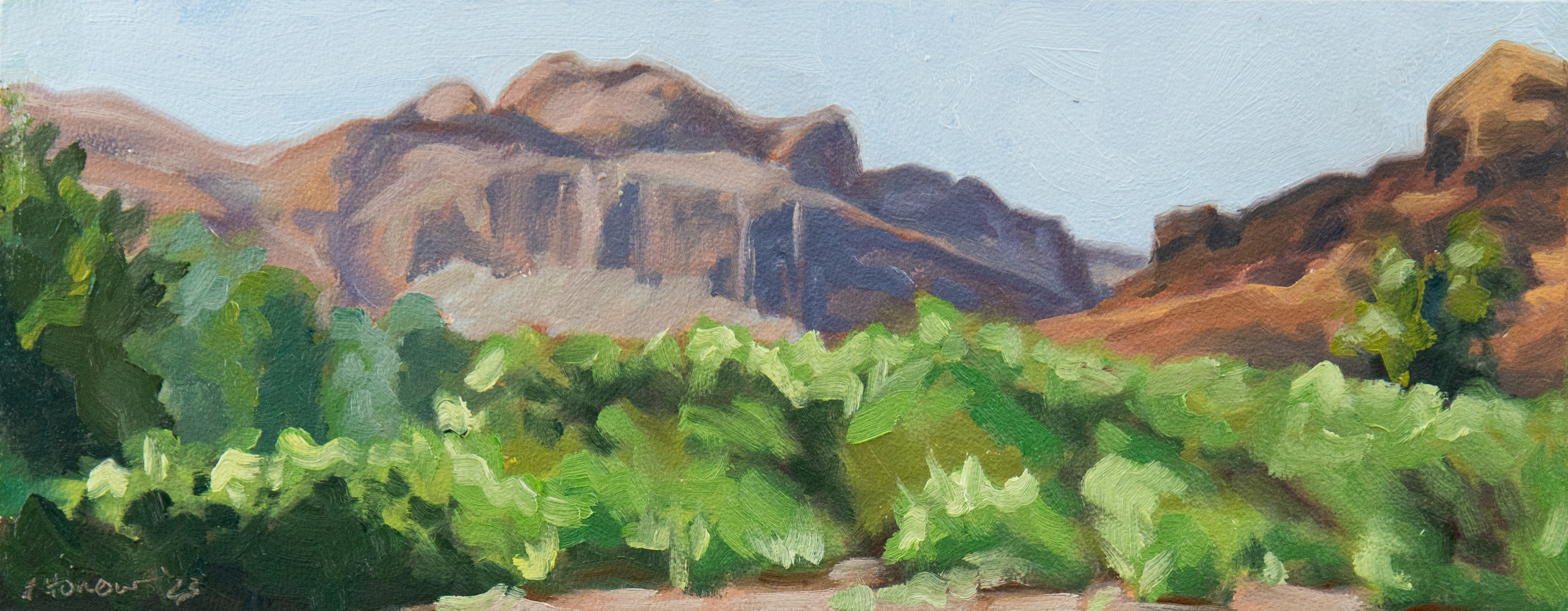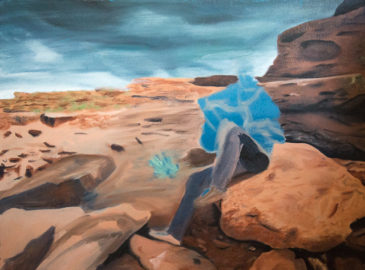
I’m really unsure what to do with this painting. I started painting it probably 5 years ago and really struggled with it before giving up. It was overly ambitious. I didn’t have the skill to finish it when I started it. I think I’ve improved enough that I can tackle it now. I’m just not sure where to start.
I don’t have much experience painting over old paintings. Although, it looks like I’ve already painted over something blue. Can I gesso over it or just start painting directly on the old painting? Should I just scrap it? I plan on using roughly the same composition.
Tiny Fisher Towers Update

I’m not good at painting rocks, which probably
means I should paint a lot more of them. Maybe that’ll be the subject of my next series. I was informed that palette knives make quick work of rocks. I’m interesting in getting some and experimenting with them, but haven’t had the chance to yet. I’ve barely had the time to paint since summer started and I’m only going to have less time as the weeks go by. I’m crossing my fingers I’ll have more time eventually.
Here is the reference photo for this painting. It’s from a Fisher Towers hike I did with my husband last November. I can tell that I went too dark with the highest cliffs on the left. The first rough in was better. I’ll keep working on trying to capture the red rocks. My efforts tend to be either too yellow or too pink.
I would have a few other paintings started by now but I haven’t had the time to finish prepping new canvas. I got 4 frames built last week, but wasn’t able to get the canvas on them. I’m going to try to work on some older paintings in the meantime.


Leave a Reply